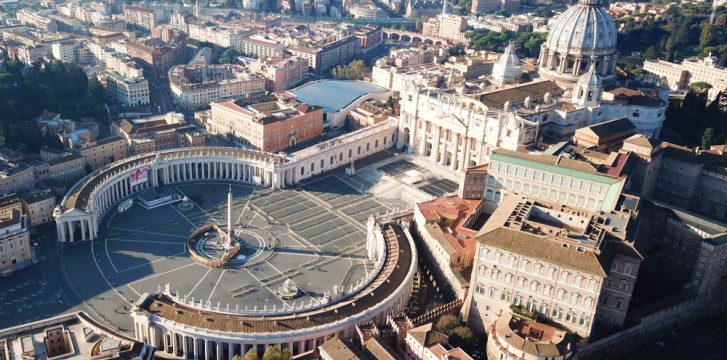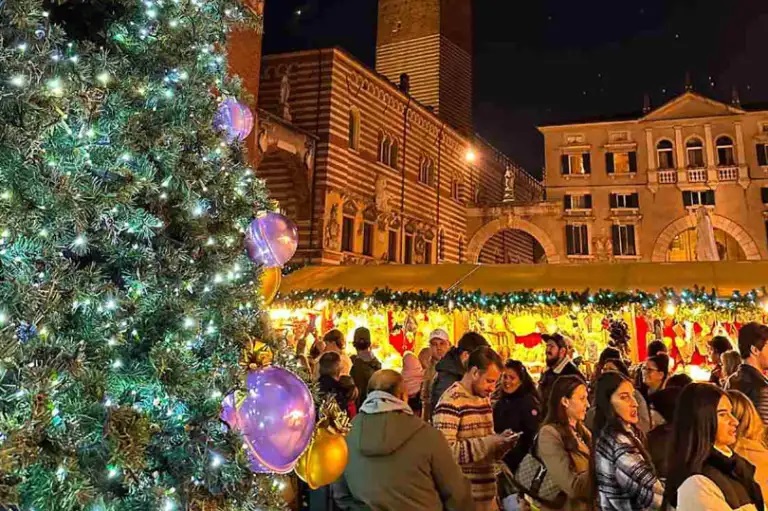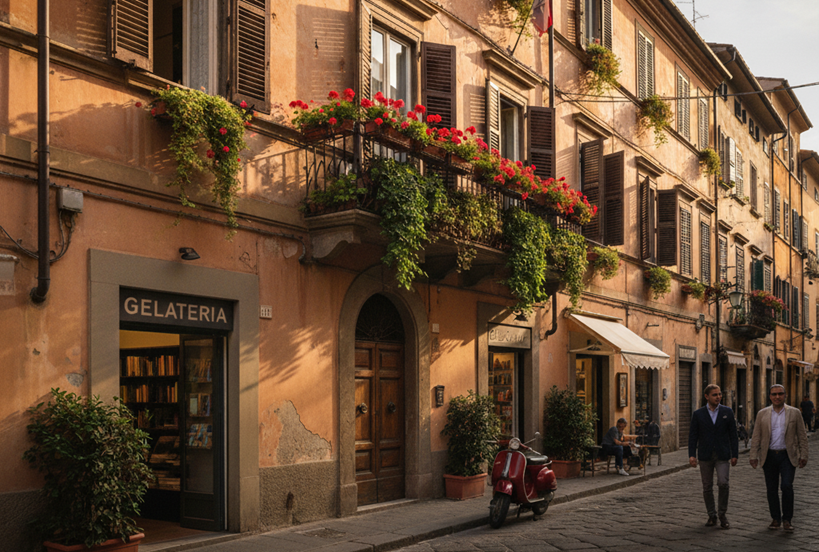Why is the Vatican in Rome?
Here is the answer to the much asked question! The Vatican is the smallest state in the world but also one of the most famous. However, many do not know its history and wonder: why is the Vatican located in Rome?
The Vatican is a well known autonomous state, and also the smallest in the world, both in size and population. Officially born when signed by the Lateran Pacts in 1929, the Papal States have an ancient and fascinating history.

Why is the Vatican located in Rome?
The Vatican is on one of the hills of Rome; in ancient times it was an uncultivated and unhealthy area. However, according to Pliny the Elder, the humid climate that characterized the hill on the right side of the Tiber river favored the growth of a special plant: a magical holm oak. It is a legend, of course, which gives the place a certain charm. Agrippinia Maggiore then had gardens built there and later Nero built a private circus there. Where the Vatican stands today, the martyrs of the first Christians took place, among whom there was also Saint Peter, Jesus’s apostle.
The legend has it that Saint Peter was buried in the same place where he was crucified, in the fourth century after Christ the basilica was built in his honor above his remains, by the will of Constantine. However, at the time, the remains of the Holy Apostle had not yet been found.
Where are the relics of St. Peter?
The location of the relics of the Prince of the Apostles remained a legend until 1950. In fact, on the initiative of Pope Pius XII – who also financed the operation, in 1940 research began on the remains of St. Peter under the Vatican. Archaeological excavations continued unabated – even during the Second World War – until 1949. A Roman necropolis was found in which numerous Christians and non-Christians were buried. In 1950, Pius XII himself announced the discovery of the bones of San Pietro. Fundamental were the studies of the archaeologist Margherita Guarducci who confirmed in 1965 the identification of the remains and the tomb that bore the epigraph in Greek “Pietro is here”.
ù

Single Female Travelers in Italy: Practical, confident, and connected
Rome rewards curiosity and courage. This guide offers grounded tips, cultural insight, and community support so you can explore with confidence—day and night, solo and on your own terms. Start with confidence “Solo doesn’t mean alone.” In Rome, you’ll find friendly locals, layered history, and a vibrant expat network. A little preparation goes a long […]

Christmas in Italy 2025: A Magical Season for Expats Across Italy
Christmas in Italy isn’t just a holiday — it’s a season full of history, flavor, celebration, and heartfelt traditions that bring families, towns, and entire regions to life. Whether you’re an expat experiencing your first Italian Christmas or a returning fan of the magic, 2025 promises some beautiful celebrations across the country. Here’s what to […]

Tax Residency Incentives in Italy — Your Guide (2025)
Italy offers several tax incentives designed to attract retirees, entrepreneurs, high-net-worth individuals and remote workers. These regimes can be extremely generous — but they are complex and often conditional. This guide explains the main options in 2025, who qualifies, and how we can help you plan a compliant move. Why Italy Offers Tax Incentives Italy […]

Navigating Healthcare in Rome: A Guide for Expats with English-Speaking Doctors
Moving abroad is exciting, that is until real life hits. I came to Italy from Alaska in 2021 for what was supposed to be a four-month study program in Florence. Four years later, I’m still here, now living and working in Rome. When we plan our dolce vita, we think about pasta, museums filled […]

Major Tax Incentives for Home Renovation in Italy (2024-2033)
Taxpayers carrying out renovation work on residential buildings and common areas of residential complexes in Italy are entitled to claim significant tax relief. This benefit allows individuals to deduct a portion of the expenses incurred from their Italian personal income tax (Irpef). This article outlines the rules, beneficiaries, and changing deduction rates for these home […]

How to Save on Taxes When Buying Your First Home in Italy
Buying a first home in Italy comes with significant tax benefits and incentives designed to make property ownership more accessible. Whether you are an Italian national or a foreigner, understanding these advantages can translate into substantial savings on your property purchase. The “Prima Casa” regime is essentially a set of tax reliefs applicable to the […]

Bringing Your Family to Italy: A Guide for Non-EU Citizens
For non-EU citizens residing in Italy, having your family with you is a tangible goal. Italian law provides a framework for family reunification, allowing you to bring close relatives to live with you under specific conditions. This guide outlines the key requirements, procedures, and rights to help you navigate the process. Who Can Apply for […]

How to Become a Self-Employed Worker in Italy
Are you a non-EU citizen wishing to work as a self-employed worker in Italy? This guide explains the conditions you must meet, the procedures to follow, and the rights you can enjoy during your stay. Conditions for Self-Employment To legally engage in independent work in Italy, non-EU citizens must satisfy several conditions and obtain the […]








